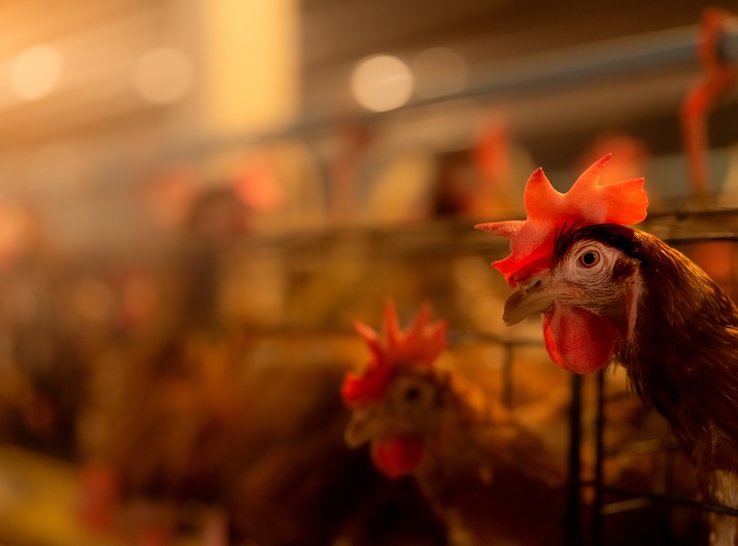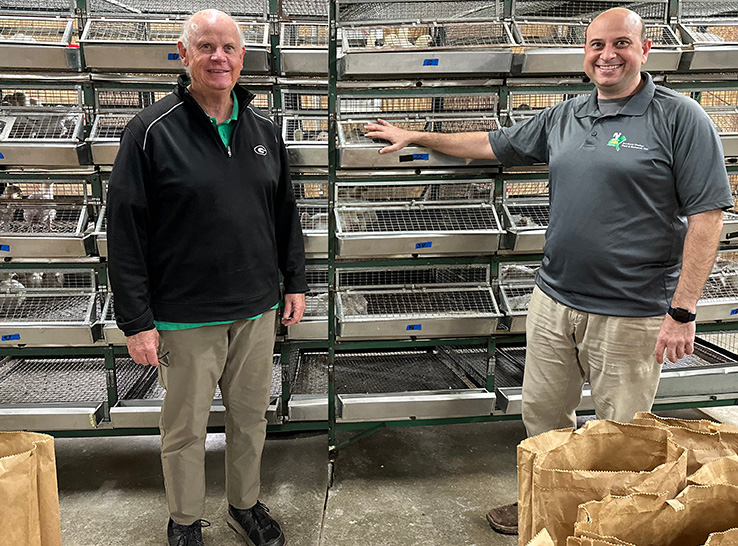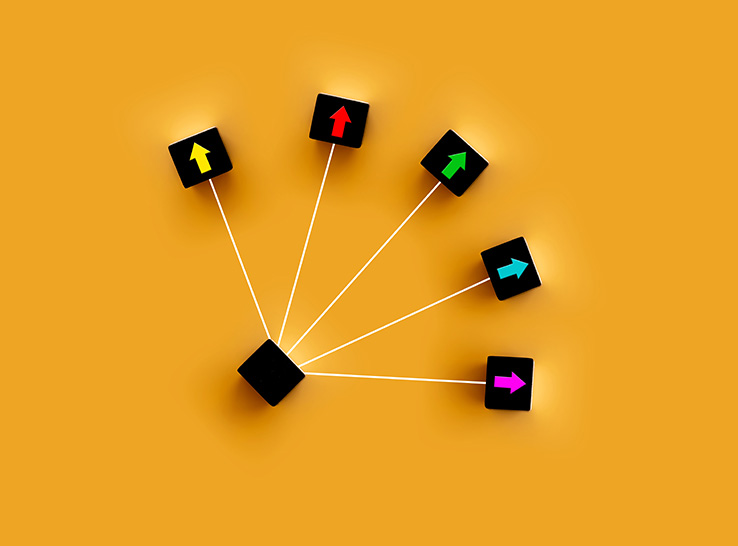By Brett Lumpkins, PhD, and Greg Mathis, PhD
Southern Poultry Feed & Research, Inc.
Athens, Georgia USA
More is probably known about the nutrition of poultry than any other animal. Research determining requirements for chickens has been conducted for over half a century, and numerous publications and books have been written on the topic. Furthermore, the industry has nutritional-management guidelines from genetic-breeding companies that provide important nutrient values aimed at maximizing growth performance.
These values are usually based on findings in birds reared in optimal conditions that enable them to reach their peak potential. Many nutritionists formulate diets to meet the bird’s requirements without exceeding them, particularly the protein/amino acid levels. Producers are trying to maximize profit and bird growth as well as limiting the nutrients being excreted.
What happens, however, when birds are faced with intestinal distress, such as that caused by coccidiosis — a significant parasitic intestinal attack that’s considered by many broiler veterinarians to be the No.1 disease of poultry?
Intestinal damage
It’s important to remember that the intestinal tract, particularly the small intestine, is the main region of nutrient absorption. This region is an ideal environment for various species of Eimeria to reside as well. When the Eimera that cause coccidiosis infect the host, they damage the intestinal villi leading to lower feed intake, malabsorption, greater fecal excretion, increased excreta moisture and higher maintenance cost, thus resulting in a higher feed-conversion ratio (FCR), depressed growth, loss of uniformity and reduced profit.
The impact of coccidiosis is readily observed in battery studies. There is an increase in the caking of litter, which indicates an increase in moisture representing an increased rate of nutrient passage and damage to the intestinal lining. With the small intestine damaged, essential nutrients are not able to be absorbed by the bird for proper growth.
Deep-tissue involvement
Of the seven Eimeria species that infect chickens, the ones that cause the most damage are Eimeria acervulina and Eimeria maxima. E. maxima is particularly problematic because it tends to infect the mid intestinal tract, and there is deep-tissue development. This deep-tissue involvement hampers recovery and extends the negative effects of nutrient absorption.
In addition, E. maxima and protein are major contributors to the proliferation of Clostridium prefringens, leading to dysbacteriosis and necrotic enteritis. Necrotic enteritis can also severely damage the intestinal lining. However, if dietary protein levels are increased to compensate for coccidiosis-related malabsorption, then necrotic enteritis may become a problem.
Several published studies have done an excellent job demonstrating the impact of diet and nutrient utilization in the presence of a coccidiosis infection.1,2 When nutrient requirements are altered — whether it’s energy, protein or amino acids — bodyweight gain and FCR are adversely affected, which indicates insufficient nutrient absorption for the bird, resulting in poor growth. These studies demonstrated that in diets formulated to meet or exceed the bird’s nutrient requirement, birds infected with coccidiosis have poor growth and a poor FCR compared to birds without coccidiosis that received diets low in either energy or protein. These published studies gave us a more quantified basis for Eimeria’s impact on nutrient absorption.
Parameters of performance
In many of our studies at our facility, birds with coccidiosis have poor bodyweight gain compared to those without the infection. In addition, the FCR, which is a more sensitive parameter, is higher in infected birds. Birds with coccidiosis also have poor feathering, which reflects insufficient amino acid utilization from methionine and cysteine.
Another qualitative observation in birds with coccidiosis is pale shanks and loss of skin pigmentation. This can lead to feed-manufacturing losses in markets such as South America where xanthophyll is added to feed to increase skin and leg pigmentation. The use of pigmentation in the diets is an added cost that would be a complete loss in the presence of coccidiosis. Furthermore, we must also consider the cost of other ingredients such as our protein and energy sources, which are not going to be utilized efficiently by the bird, again resulting in a loss of money from feed manufacturing due to poor feed conversion.
In the natural poultry-production segment of the industry, many alternative products have been introduced to fill the gap left by drugs that are no longer used. We have seen an increase in the use of many essential oils such as oregano, capsaicin, saponins, tannins and other plant-based extracts.
Instead of being used as standalone anticoccidials, these extracts function best in combination with other anticoccidial programs. They are often put into the feed of birds that are vaccinated against coccidiosis. This is mainly beneficial, considering many natural products have some anticoccidial activity. Therefore, there is a balance between modulating coccidiosis with these alternative products and initiating immunity with vaccination.
The degree and timing of the modulation, however, is critical. The strength and inclusion levels of anticoccidials put into feed, the start and duration of feeding and even the fecundity of coccidia within various vaccines all relate to inhibiting immunity development and need to be considered. When in doubt, one option is to start usage of the alternative products in the grower phase. This will allow good immunity development before modulating.
We should note that some of the alternative products have antimicrobial activity, which is a plus and a feature that chemical anticoccidials do not have.
Reconsider nutrient requirements
The importance of coccidiosis vaccination is exemplified by work conducted at Oklahoma State University by nutritionist Robert Teeter, PhD.<sup”>3 He has presented results demonstrating that any loss in live performance at an early age due to coccidiosis vaccination is less detrimental than a coccidial infection when birds are closer to market weight. In light of this finding, we believe it’s time to reconsider nutrient requirements during the early feed phase of broilers that receive coccidiosis vaccination at the hatchery.
Coccidioisis vaccination exposes birds to a mild dose of coccidia at hatch that initiates immunity against coccidia and increases nutrient requirements. The requirement for protein peaks during a chick’s period of early growth and development. Therefore, in addition to understanding the anticoccidial program used, we must consider the nutritional matrix these diets have been formulated for.
Another way to reduce losses due to field coccidiosis or vaccination is by feeding highly digestible ingredients; digestive enzymes, including both nonstarch polysaccharides and phytase; and a synthetic amino acid.These exogenous enzymes and synthetic amino acids allow more digestible diets to be formulated, especially considering the high use of alternative feed ingredients such as distillers’ dried grains, which are not considered to be a high-quality protein compared to a meat meal.
Unfortunately, coccidiosis is still an ever-present problem for the poultry industry due to the dearth of available and effective anticoccidials and issues with coccidiosis vaccination. Producers must use all tools available to contain the problem. Nutrition is one of those tools that can help reduce performance losses and enable birds to reach their genetic potential despite coccidiosis.
1 Kim, E., W. Lambert, and E. Kiarie. 2023. Impact of Eimeria on apparent retention of components and metabolizable energy in broiler chickens fed single or mixture of feed ingredients-based diets. Poul. Sci 102:102526
2 Freita, LF.V., J.C.P. Dorigam, M.P Reis, F. Horna, J.B.K. Fernandas and N.K. Sakomura. 2023. Eimeria maxima infection impacts the protein utilization of broiler chicks. International Journal of Animal Biosciences.
3 Teeter R. Coccidiosis effects on energy cost. Worlds Poult Sci J. 2008;64(2).
Editor’s note: The opinions and/or recommendations presented in this article belong to the author and are not necessarily shared by Modern Poultry.








